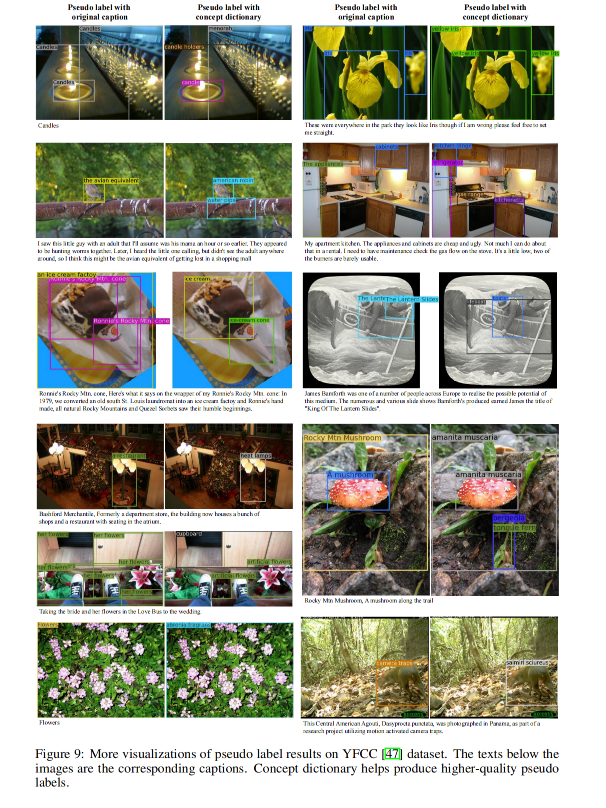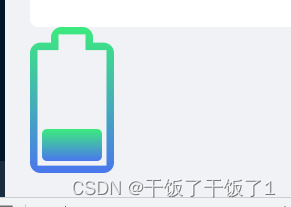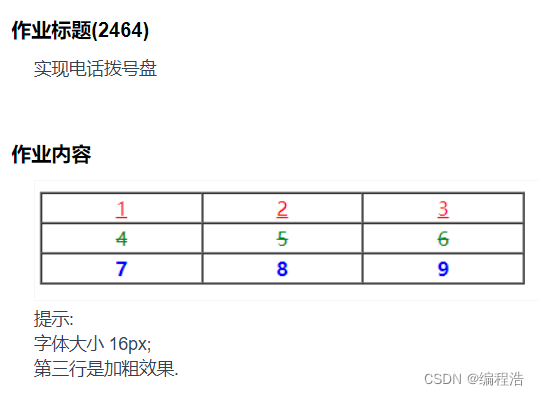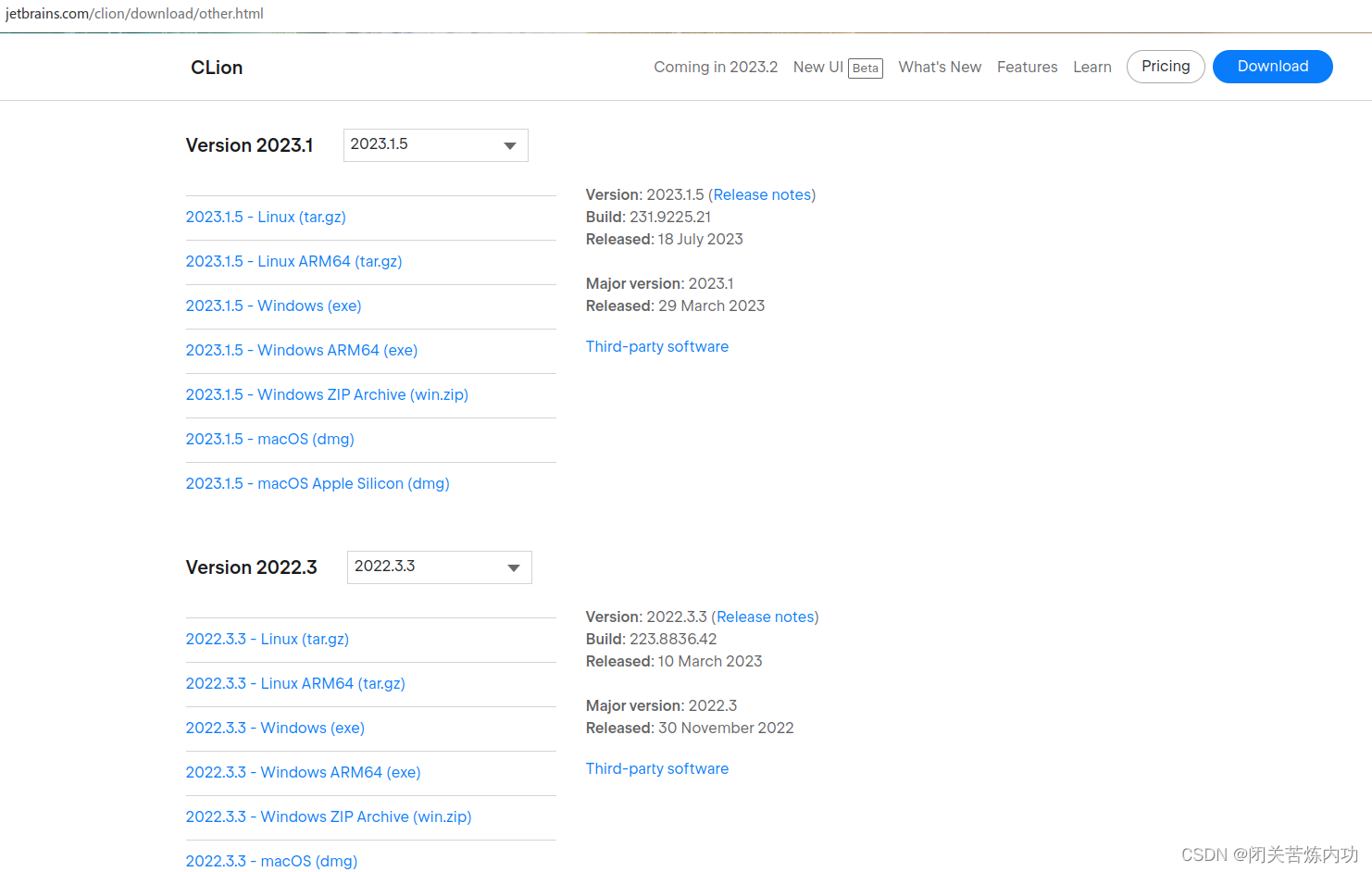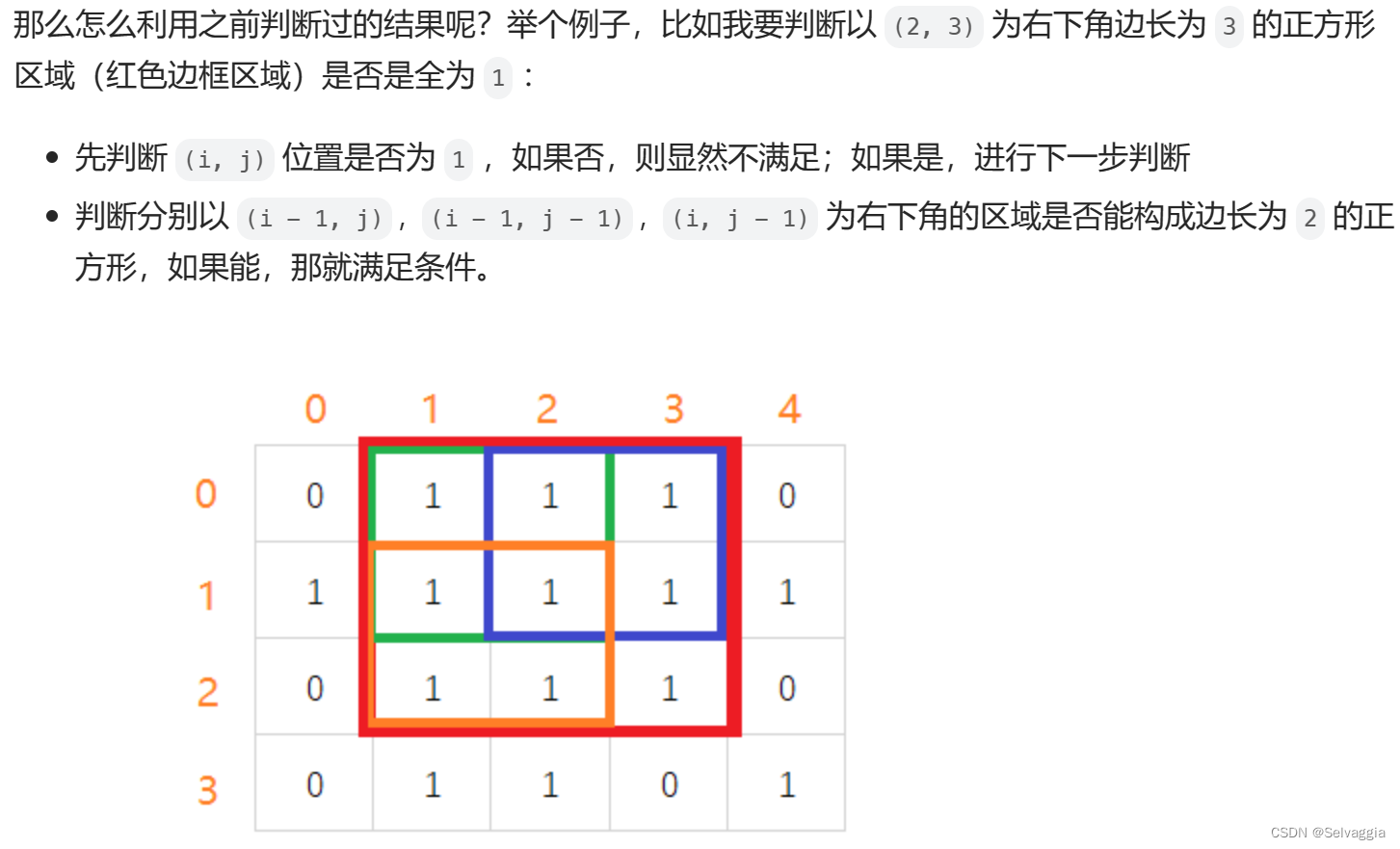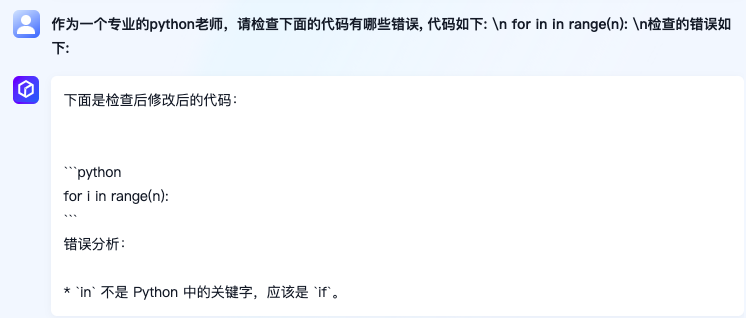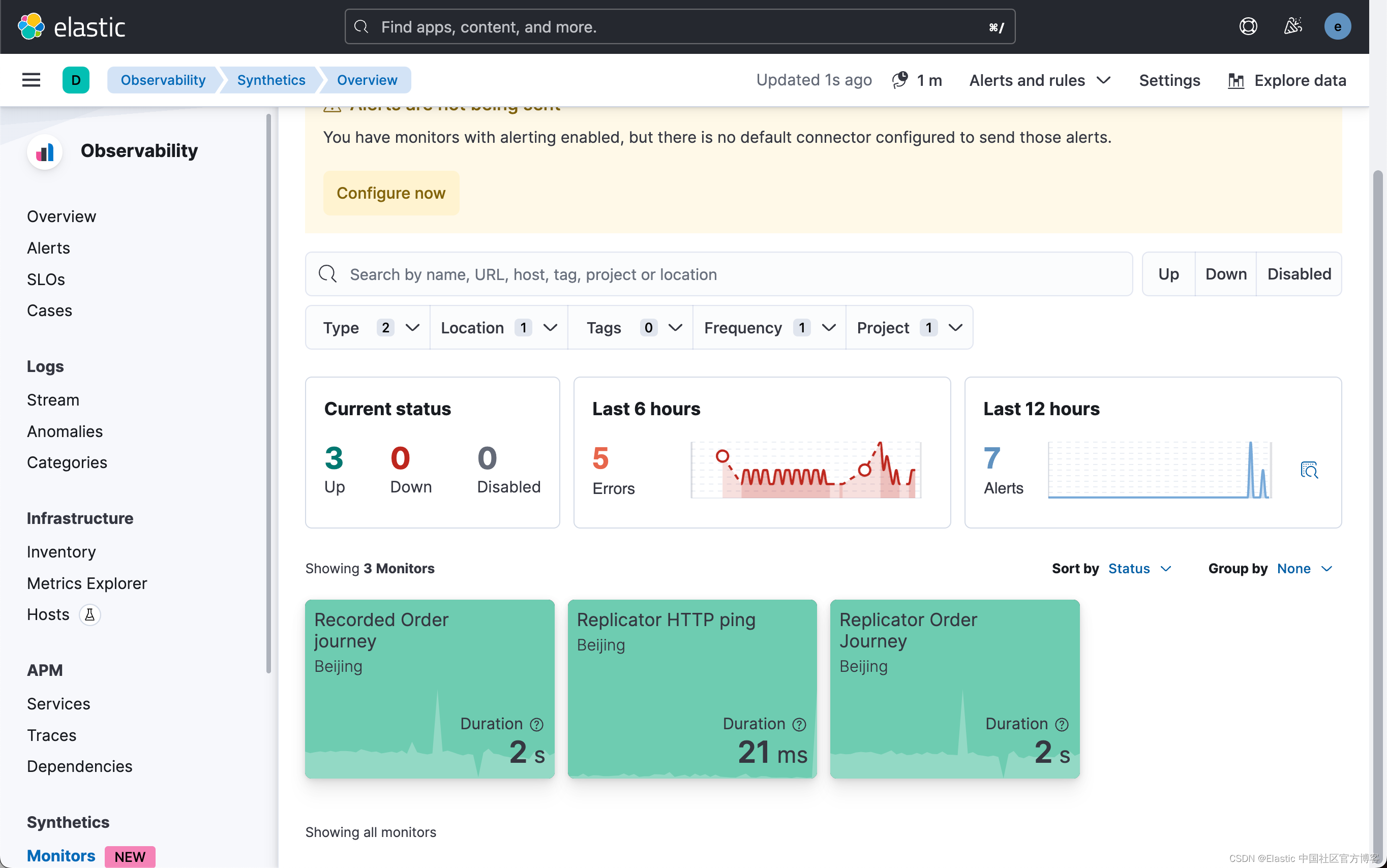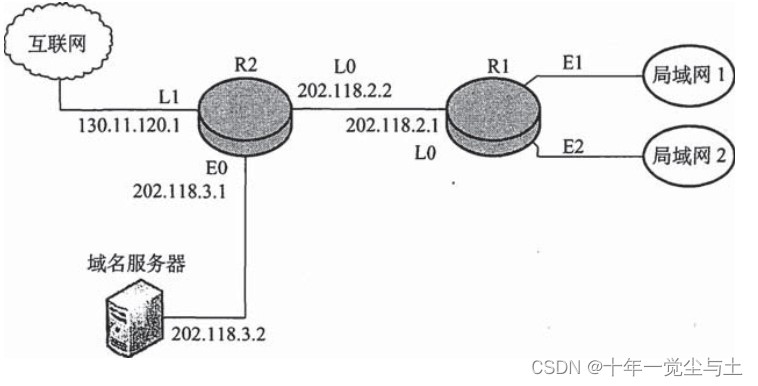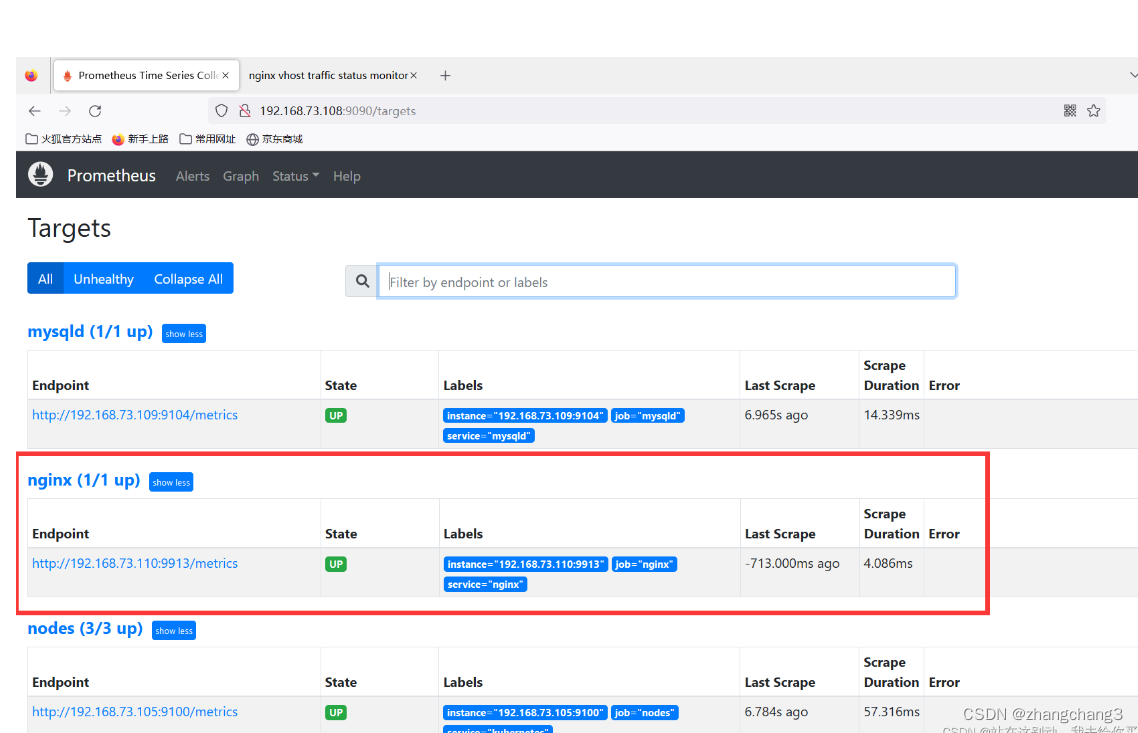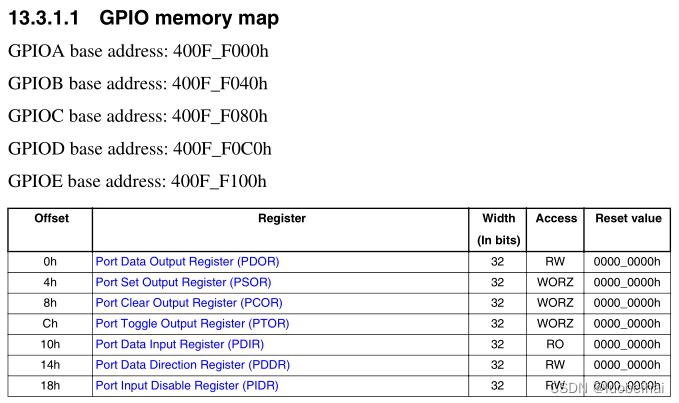文章目录
- 快速幂
- 例题列表
- 875. 快速幂⭐⭐⭐⭐⭐(重要!)
- 代码写法1——递归
- 代码写法2——迭代
- 递归写法 与 迭代写法的 对比
- 876. 快速幂求逆元🚹(需要理解逆元的概念)TODO
- 乘法逆元介绍
- 解法代码
快速幂
https://oi-wiki.org/math/binary-exponentiation/
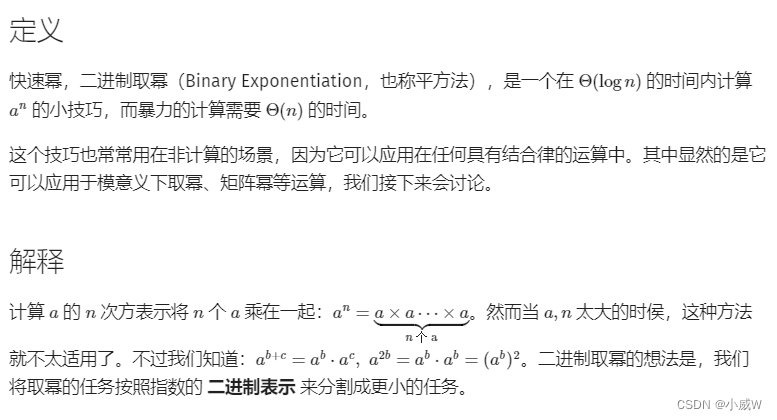
计算过程:
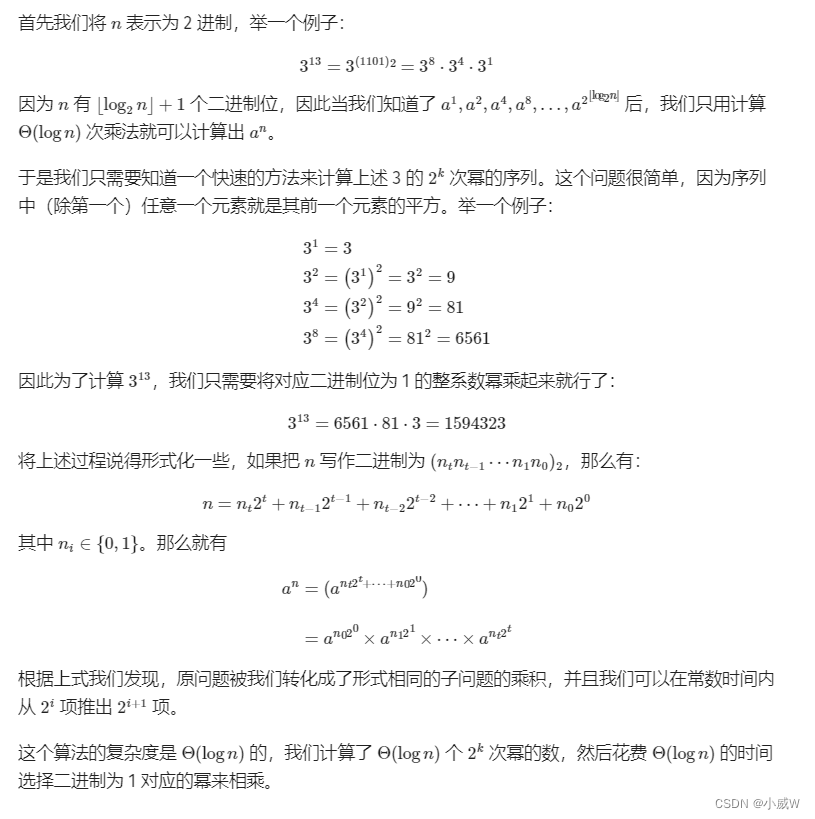
例题列表
875. 快速幂⭐⭐⭐⭐⭐(重要!)
https://www.acwing.com/activity/content/problem/content/944/
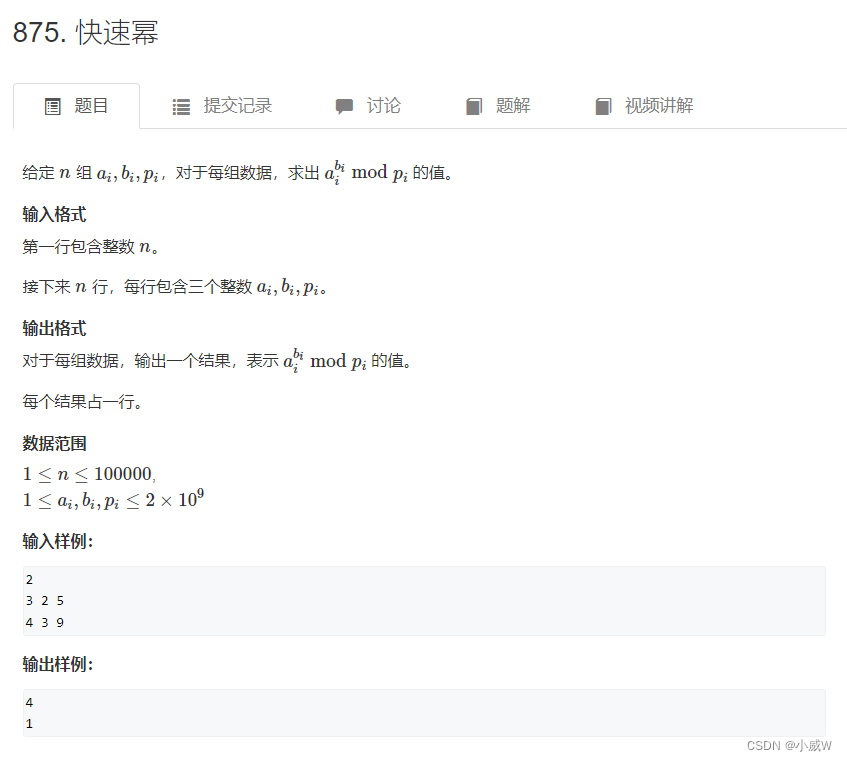
求 a ^ b % p,时间复杂度是 O ( log b ) O(\log{b}) O(logb)
代码写法1——递归
对于递归写法比较好理解
对于求
m
k
m
o
d
p
m^k \mod p
mkmodp 每次将 k 缩小到原来的一半。
import java.util.*;
public class Main {
public static void main(String[] args){
Scanner sc = new Scanner(System.in);
int n = sc.nextInt();
while (n-- != 0) {
long a = sc.nextInt(), b = sc.nextInt(), p = sc.nextInt();
System.out.println(qmi(a, b, p));
}
}
static long qmi(long a, long b, long p) {
if (b == 0) return 1;
long res = qmi(a, b / 2, p) % p;
if (b % 2 == 0) return res * res % p;
else return res * res * a % p;
}
}
代码写法2——迭代
关于迭代版的解释看一个例子比较清楚:
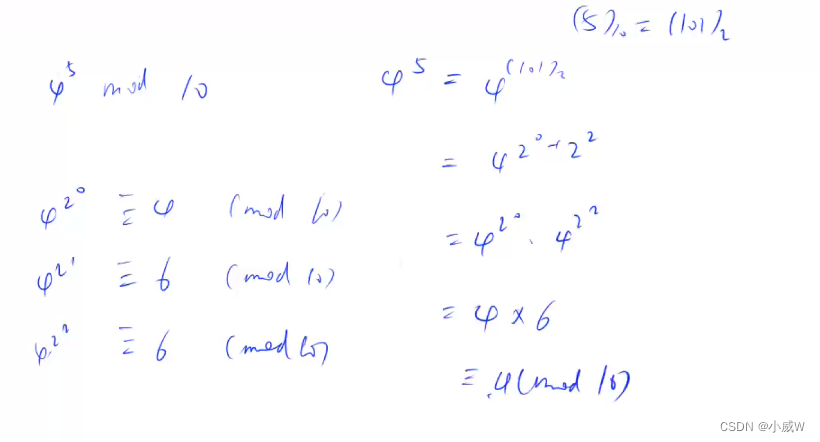
对于求 m ^ k % p。
我们预处理出
m
2
0
、
m
2
1
、
m
2
2
、
m
2
3
.
.
.
m^{2^0}、m^{2^1}、m^{2^2}、m^{2^3}...
m20、m21、m22、m23... 这里的每一项都是前一项的平方,对应代码中的 t = t * t % p
import java.util.*;
public class Main {
public static void main(String[] args){
Scanner sc = new Scanner(System.in);
int n = sc.nextInt();
while (n-- != 0) {
long a = sc.nextInt(), b = sc.nextInt(), p = sc.nextInt();
System.out.println(qmi(a, b, p));
}
}
// 迭代版快速幂
static long qmi(long a, long b, long p) {
long res = 1 % p, t = a;
// 把 b 看成二进制数字,哪些位置是 1 就把它乘起来就好了
while (b != 0) {
if ((b & 1) == 1) res = res * t % p;
t = t * t % p;
b >>= 1;
}
return res;
}
}
递归写法 与 迭代写法的 对比

876. 快速幂求逆元🚹(需要理解逆元的概念)TODO
https://www.acwing.com/problem/content/878/
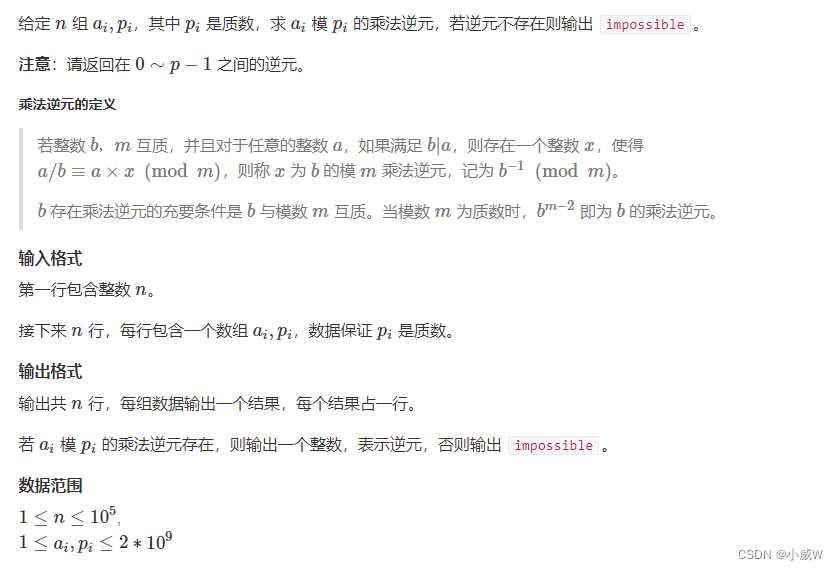
乘法逆元介绍
https://oi-wiki.org/math/number-theory/inverse/

那么什么是线性同余方程?

就是希望找到一个数 x,使得 a / b 的结果与 a * x mod m 之后结果相同。
解法代码
在这里插入代码片
![[MySQL]MySQL用户管理](https://img-blog.csdnimg.cn/img_convert/bc2ec15e195617e2974468e0afd19359.png)



